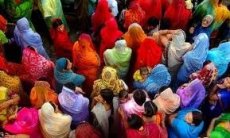New publications
WHO is concerned about the onset of lepra epidemic in India
Last reviewed: 30.06.2025

All iLive content is medically reviewed or fact checked to ensure as much factual accuracy as possible.
We have strict sourcing guidelines and only link to reputable media sites, academic research institutions and, whenever possible, medically peer reviewed studies. Note that the numbers in parentheses ([1], [2], etc.) are clickable links to these studies.
If you feel that any of our content is inaccurate, out-of-date, or otherwise questionable, please select it and press Ctrl + Enter.

The World Health Organization (WHO) has expressed concern over the rising number of new cases of leprosy in the poorest districts of India. According to the head of the WHO regional office Nata Menabde, the number of new cases of the disfiguring disease exceeds the WHO standards in 209 of India's 640 districts.
Menabde recalled that the goal of eliminating leprosy as a public health threat was achieved by India back in 2005. The criterion for elimination is a reduction in the number of new cases of infection below 1 per 10 thousand people.
But six years after the leprosy was officially declared eradicated, the situation with the infection has worsened dramatically, especially in the poorest areas of the country. Currently, Menabde emphasized, India accounts for the majority of new cases of the disease registered worldwide – more than 120,000 a year.
Ten percent of newly diagnosed leprosy cases are in children. "All this indicates that the gains in the fight against leprosy may be lost and that India may lose its status as a country that has eliminated the disease," the WHO representative stressed.
